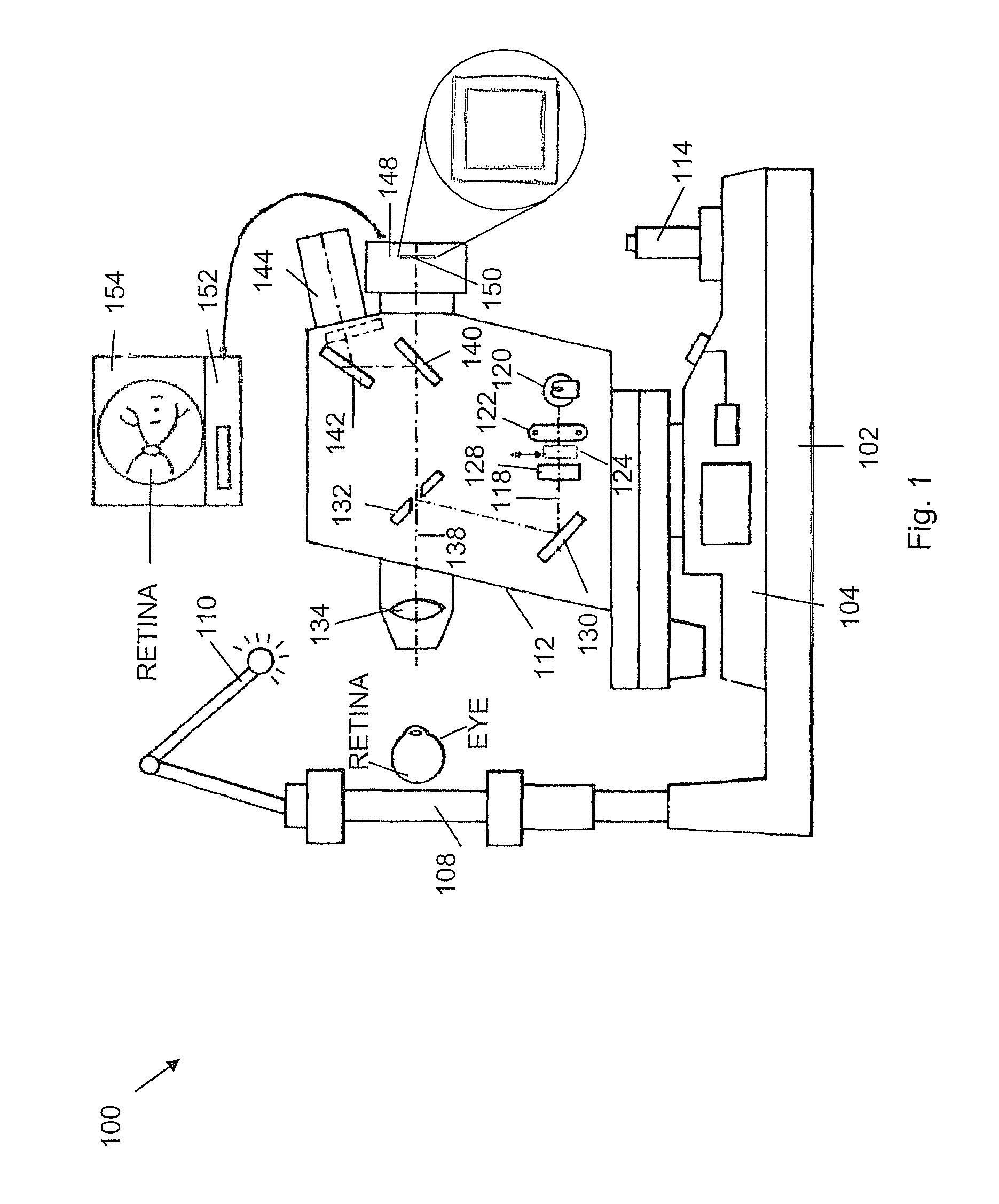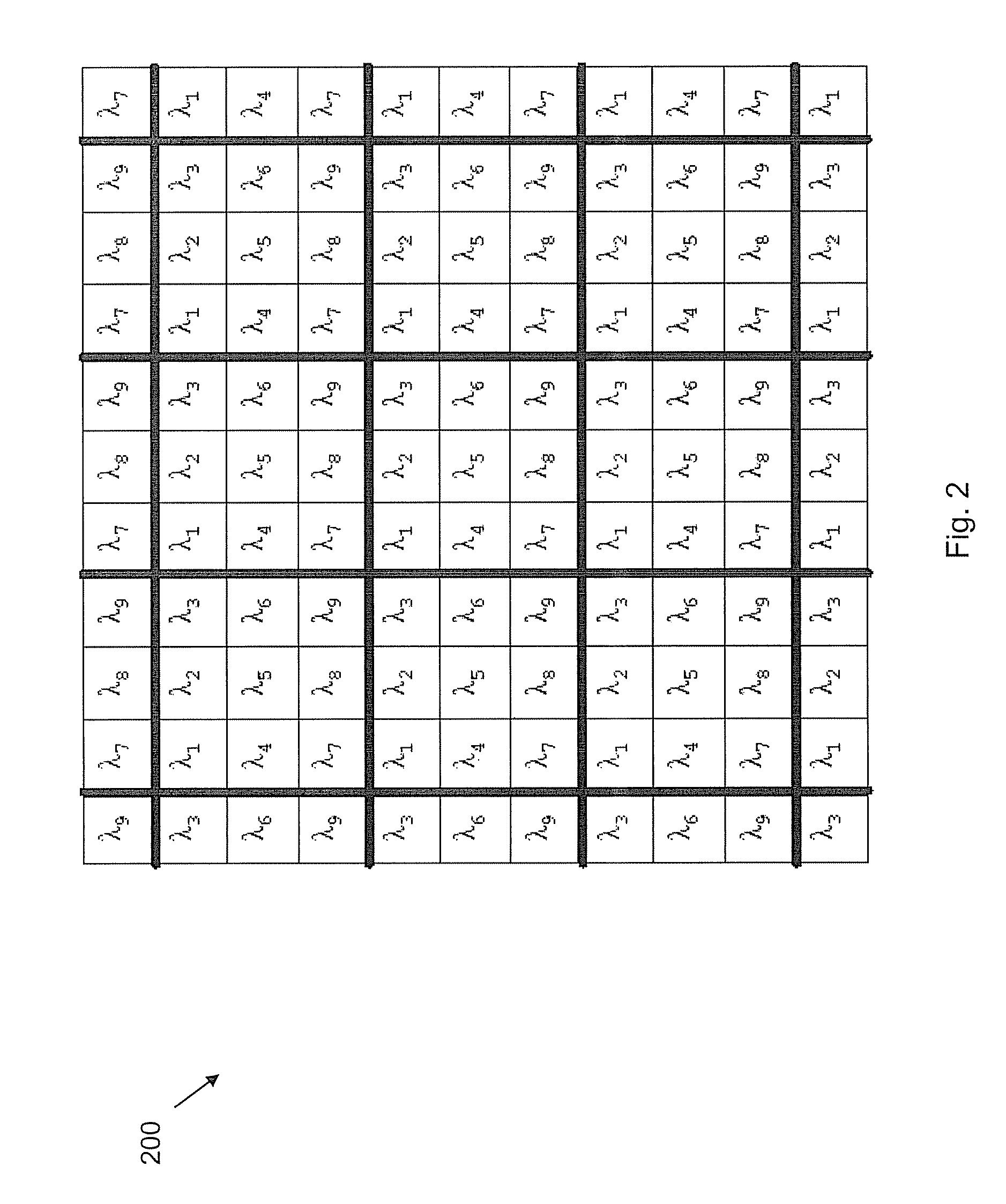Snapshot spectral imaging of the eye
a spectral imaging and eye technology, applied in the field of spectral imaging, can solve the problems of poor characterization and control of the optical environment, and high labor intensity, and achieve the effect of compounding the optical sensitivity of the retina and the low numerical aperture of the ey
- Summary
- Abstract
- Description
- Claims
- Application Information
AI Technical Summary
Benefits of technology
Problems solved by technology
Method used
Image
Examples
Embodiment Construction
)
[0077]Throughout this disclosure, the phrase “such as” means “such as and without limitation”. Throughout this disclosure, the phrase “for example” means “for example and without limitation”. Throughout this disclosure, the phrase “in an example” means “in an example and without limitation”. Throughout this disclosure, the phrase “in another example” means “in another example and without limitation”. Generally, examples have been provided for the purpose of illustration and not limitation.
[0078]FIG. 1 depicts the principle elements of a typical eye fundus camera 100 with a digital camera back 148, in accordance with an embodiment of the present invention. The camera 100 is described here in general only in order to better clarify the embodiments of this invention. A chin rest face holder 108 is an extension of camera base 102 and may include an eye fixation lamp 110. A joystick-adjustable stage 114 may be placed on top of the camera base 102 that holds the optical system or unit 11...
PUM
 Login to View More
Login to View More Abstract
Description
Claims
Application Information
 Login to View More
Login to View More - R&D
- Intellectual Property
- Life Sciences
- Materials
- Tech Scout
- Unparalleled Data Quality
- Higher Quality Content
- 60% Fewer Hallucinations
Browse by: Latest US Patents, China's latest patents, Technical Efficacy Thesaurus, Application Domain, Technology Topic, Popular Technical Reports.
© 2025 PatSnap. All rights reserved.Legal|Privacy policy|Modern Slavery Act Transparency Statement|Sitemap|About US| Contact US: help@patsnap.com



